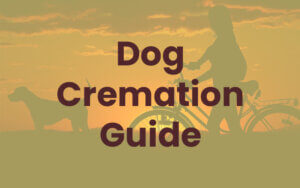You can do many creative things with the cremation ashes of a deceased loved one: Display them in a fancy urn, scatter them in nature, and even use them to grow a tree with a bio-urn.
Perhaps one of the most meaningful things you can do is turn them into what’s known as a cremation or memorial diamond.
Cremation diamonds, also known as memorial diamonds, are diamonds made from the ashes or hair of a deceased person. They are made by applying pressure and heat to ashes which “grows” the carbon in the ashes to diamonds. They are physically, chemically, and aesthetically identical to mined diamonds.
Of course, there’s one thing that sets memorial diamonds apart from natural diamonds: They are a unique, stunning, and timeless way to keep your loved one physically and spiritually close to you for the rest of your life.
In this comprehensive guide to cremation diamonds, put together after countless hours of research, including placing mock orders, I will explain everything you need to know about turning ashes into diamonds, including:
- How cremation diamonds compare to natural diamonds,
- How cremated remains are turned to diamonds,
- Complete buyer’s guide, so you know what to be aware of when buying a memorial diamond,
- Facts relating to turning pet cremation ashes to diamonds,
- Frequently asked questions,
- A breakdown of our favorite cremation diamond companies operating as of 2023, and the companies you must avoid.
Our Favorite Cremation Diamond Company in 2023

Eterneva
Our top pick for premium cremation diamonds. Amazing prices, simple process, and empathetic team.
In This Article
Cremation Diamonds vs Mined Diamonds
When people first hear about “cremation diamonds” it’s common to think “they can’t really be diamonds, right? It must be a euphemism of some sort?”
Nope. Cremation and mined diamonds are chemically and physically identical, meaning they have the same composition, crystal structure and physical properties. They are genuine diamonds.
Most jewelers can’t tell the difference between them. Can you?
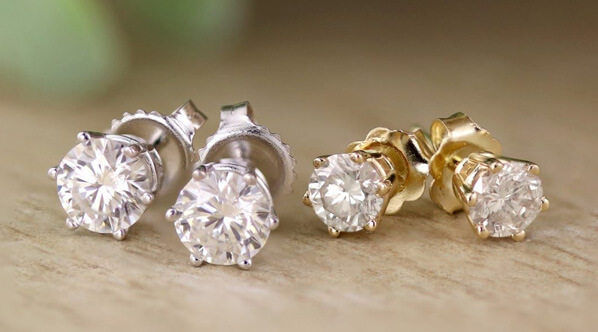
Differences Between Cremation Diamonds and “Natural” Diamonds
The only real differences between the cremation and “natural” diamonds lie in the carbon source used to create them, the time they take to make, and how they are made.
Cremation diamonds are lab-made diamonds created using carbon sourced from the ashes or hair of a deceased person, subjected to high pressure and temperature in a laboratory. This can take several months.
In contrast, “natural diamonds” are formed deep within the Earth’s crust over millions of years through natural heat and pressure. They are then mined from the Earth.
Cremation Diamonds are Real, Genuine Diamonds
Because cremation diamonds are lab-made and 100% conflict free, they are surrounded by a certain level of artificial controversy.
The traditional diamond industry dislikes lab-made diamonds because they threaten the monopoly certain companies have. On the flip side, I dislike mined diamonds because of the exploitation that plagues the mined diamond industry.
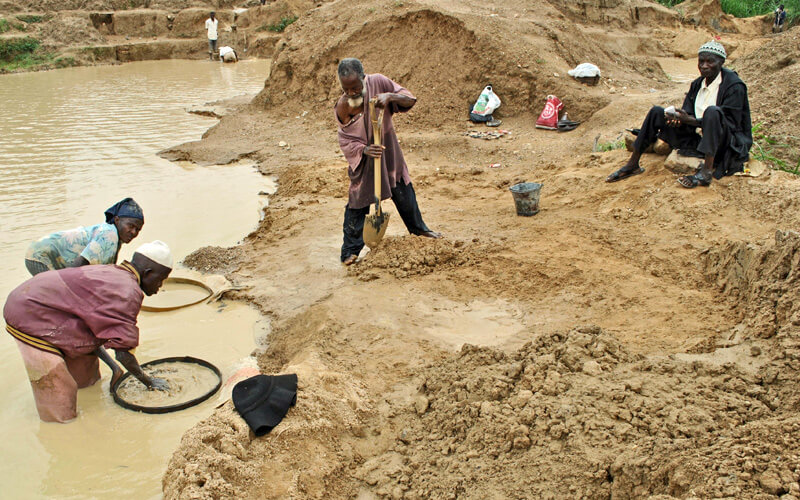
Regardless, mined, natural, lab, and cremation diamonds are all recognized as real diamonds; this has been ruled on by the Federal Trade Commission.
How Cremation Ashes are Turned into Diamonds
Before you buy any type of cremation jewelry, it’s natural to want to know exactly how your loved one’s cremains will be turned into something else.
In the case of memorial diamonds, the process is relatively intense and time-consuming. Of course, the result is more than worth it.
Step 1: Extracting and Purifying Carbon
Once your memorial diamond company receives the small amount of cremation ashes you send them, they need to purify and extract the 0.5% to 2.5% carbon content it contains. This carbon is the key component in creating a diamond from ashes, as it is what they are used to grow.
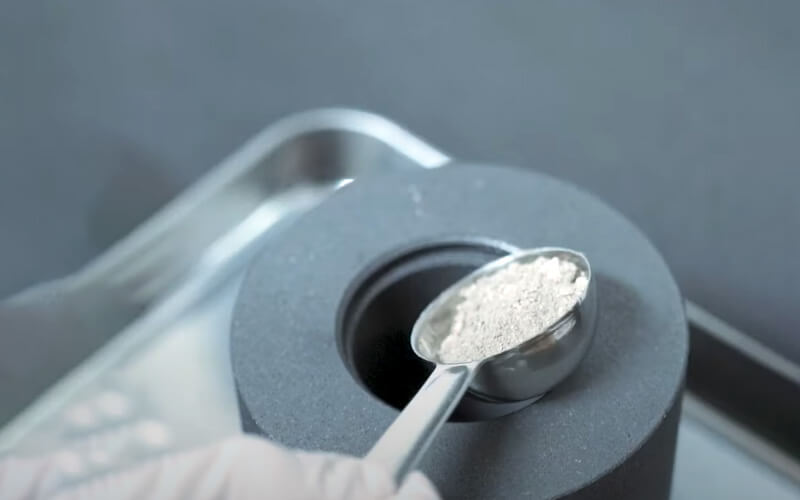
Impurities are removed then the carbon is extracted to graphite in a high heat, oxygenless environment. This process is often referred to as “graphitization”.
Step 2: Diamond Growth
Using the graphite extracted in step 1, the next step in turning ashes into diamonds is growing the memorial diamond itself.
In some cases, if enough graphite could not be extracted from the cremated remains, a small amount of lab graphite may also be added.
Scientists will then place the graphite and a diamond seed into a growth cell. The growth cell is then placed into a High-Pressure High Temperature (HPHT) machine, which simulates the conditions 150 to 200 km below Earth’s surface.

Lab technicians will monitor the transformation process over several months as the graphite slowly takes on the crystal structure of a diamond.
Unlike most lab-made diamonds that use a chemical vapor deposition process, HPHT machines produce only one diamond at a time. This is one factor that means that every cremation diamond is completely unique.
Step 3: Cutting and Polishing
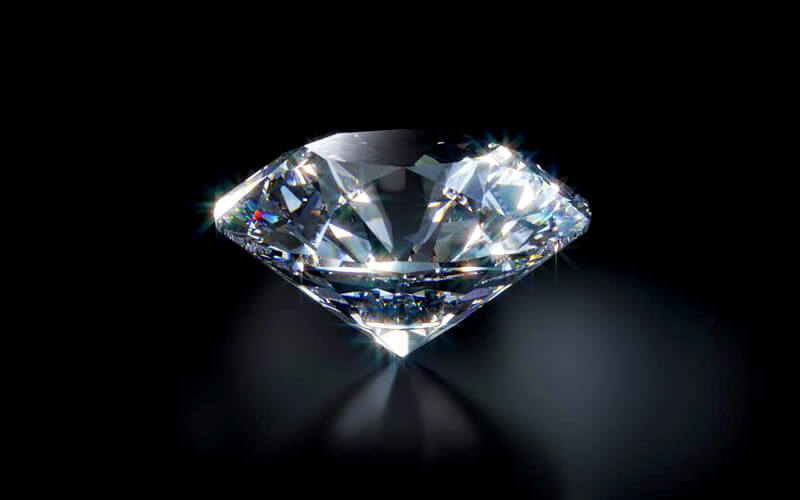
Once the rough diamond has fully formed and is the desired size, it is carefully cut and polished to bring out its natural beauty.
The diamond can be cut into various shapes, including round, princess, oval, and more.
Other steps follow these, such as coloration in some cases, engraving, laser inscription, and certification. We discuss these further below.
So Memorial Diamonds Aren’t a Hoax?
Cremation diamonds are not a hoax. They are made using the small amount of carbon that remains in human remains after cremation. The claim that they are “illegitimate” is a hoax itself.
Over the years, the legacy diamond industry (think outfits like De Beers) has sought to claim that memorial diamonds are a “hoax” or a “scam”.
Related Article: Are Cremation Diamonds Real or a Hoax? [Science Explained]
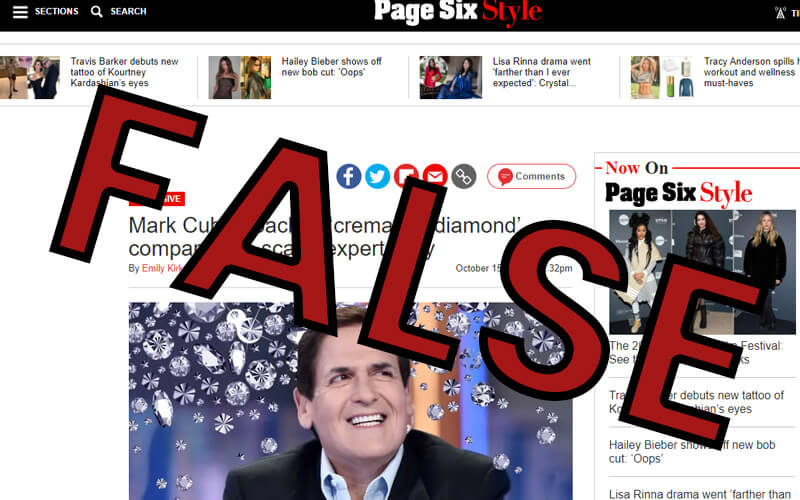
We can’t ignore the source. The legacy diamond industry has a dark side that has been written about for many years. They have incentive to lead consumers away from any new technology that threatens the huge profits they make every year off the back of exploitation in third world countries.
But setting aside the source, what do the “cremation diamond hoaxers” actually claim?
- Human ashes don’t contain carbon because carbon is destroyed in the cremation process.
- If cremation ashes contain carbon, carbon from outside sources is still added to make cremation diamonds.
I will address these in order:
Do Human Ashes Contain Carbon?
According to a study published in Forensic Science International in 2011, human ashes after cremation in temperatures exceeding 1,800°F still contain residual carbon in the form of calcium carbonates from the deceased’s bones.
Further, according to Jonathan Jarry, MSc for the McGill Office for Science and Society, it is “undeniable” that carbon survives cremation.
So yes, ashes do contain carbon.
Is Carbon From Outside Sources Also Used?
It is true that carbon from other sources is, in some (but not all) cases, added to the ashes to make cremation diamonds.
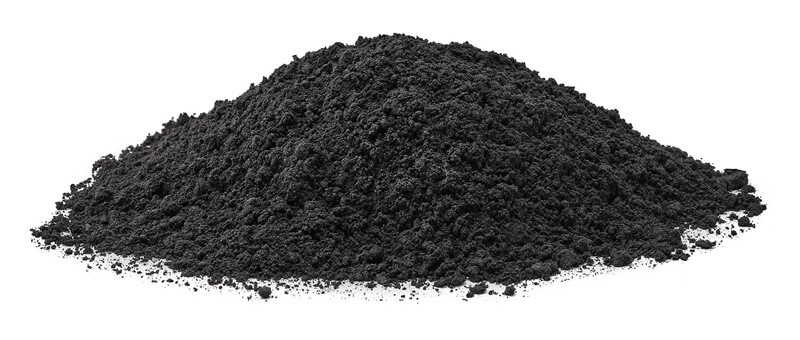
This is not something that cremation diamond companies hide, nor is it indicative of a hoax or scam.
In the same way chocolate is one of only many ingredients in a chocolate cake, ashes are just one of a number of sources of carbon that can be used in the making of a cremation diamond.
Even if a cremation diamond was only 50% made from ashes, this would not change the fact that they are a way to keep lost loved ones close beyond their time. It does not alter the fact that memorial diamonds are fundamentally grown using carbon recovered from cremation ashes.
Certification
Despite the reality that cremation diamonds are not a hoax, the legacy diamond industry continues to attack memorial diamonds and lab diamonds in general.
Cremation diamond companies have had to adapt.
All reputable cremation diamond companies provide certificates of authenticity for their diamonds.
These certificates come from reputable third-party organizations such as the Gemological Institute of America, the Swiss Gemological Institute, or the International Gemological Institute.
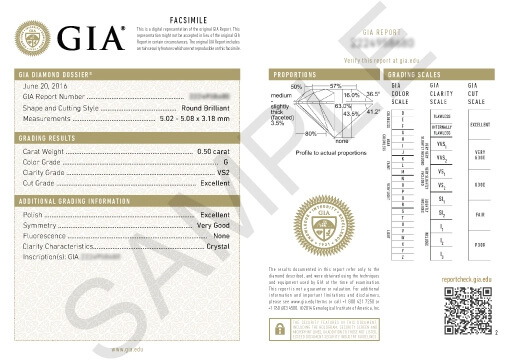
These grading reports confirm the authenticity, size, cut and color of the memorial diamond you receive.
Furthermore, these companies will provide evidence that the diamond was grown from the carbon source they were provided with.
If all that wasn’t enough, they also engrave their diamonds with very (very) small inscriptions, only viewable under a strong microscope, to record the diamond’s source.
Buyer’s Guide
So, you’ve decided to buy a memorial diamond to immortalize your loved one.
Buying a memorial diamond is a big deal.
Not only will you be investing a decent amount of money, but there’s a lot of trust involved with giving a part of your loved one to a company you have probably never dealt with before.
Below we set out all the things you need to be aware of and looking for:
Choosing a Cremation Diamond Company
With so many companies selling cremation diamonds, it can be difficult to know which one to choose.
Here are some important factors to be considering in the company you want to go with:
Prices
Prices vary significantly between companies. It’s important to consider and understand what is included in the cost.
It will cost you at least $3,000 for something I’d consider “good”, depending on the size and color. However, prices can go up to $20,000 for the best options.
It’s also important to be aware that most of the time, the price for transforming cremation ashes into a diamond doesn’t include the setting you want:
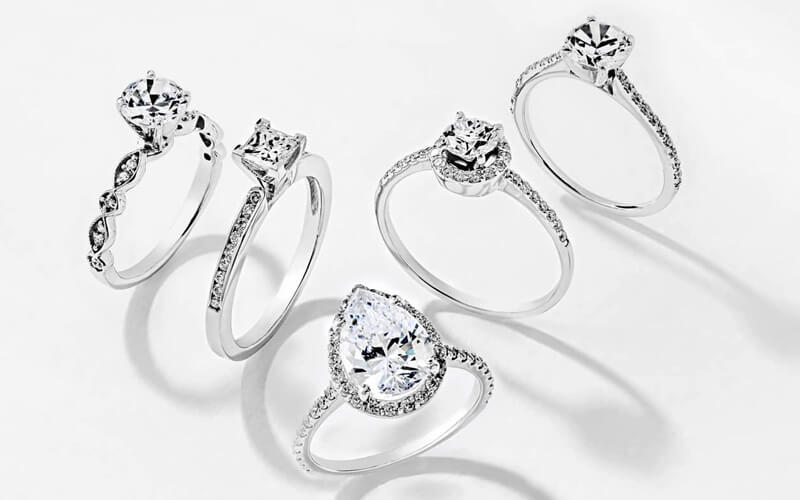
Whether you choose a ring, necklace, or something else, this will be an additional cost you need to consider. However, it will typically be a lot less than the diamond itself.
Some companies offer “family options” that allow you to buy multiple diamonds at a lower price; this is something to look out for.
Furthermore, many companies offer interest-free finance, payment plans, and prepay options starting at as low as $29 per week.
Timeframe
Another important factor to consider is the timeline for creating the diamond from ashes.
Depending on the carat, most companies take 7 – 11 months to turn ashes into diamonds. Creating a diamond takes time!
Some companies will offer a timeframe guarantee if urgency is important to you.
However, I would typically not recommend blindly choosing the fastest option: When buying a diamond, you want something perfect, not rushed. Just because one company is offering to do it faster doesn’t mean it will be worth it.
In fact, at least one company we reviewed, Heart-in-Diamond, claimed they could create a cremation diamond in 70 days. This didn’t impress us; we actually took it as a red flag to their legitimacy.
Consultants and Customer Support
Finally, consider the level of support and consultation that the company provides.
A good cremation diamond company will have experienced consultants who can guide you through the process and answer any questions you may have.
Budget and Pricing
Once you have selected the company you want to go with, you need to pick the diamond and setting you want.
Before you go any further, I suggest setting a budget.
As mentioned above, you can get a genuine cremation or memorial diamond for as little as $3,000. However, it’s very easy to go much higher than this if you fall into the various upselling strategies certain companies employ.
This is something we can’t really answer for you. What you are willing to spend is what you are willing to spend.
At the end of the day, any diamond you buy will be beautiful – and what will make it special won’t be how much you spent on it, how big it is, or how shiny it is. What will really make it special is what it means to you.
Jewelry and Setting
Another factor you need to consider when choosing a memorial diamond company, and when selecting a diamond in general, is what settings they offer and what setting you want.
Theoretically, having a diamond by itself is possible, and some brands offer this. Still, most people want it in some sort of jewelry. Whether you wish to go with something made from gold, platinum, or something else, most companies offer many popular types of cremation jewelry.
Rings
Rings are the popular option for memorial diamonds.
Like a wedding ring, this can be worn at all times as a constant reminder of your loved one and the impact they had on your life.
Most companies offer various options for rings, including solitaire, pavé, and halo settings.
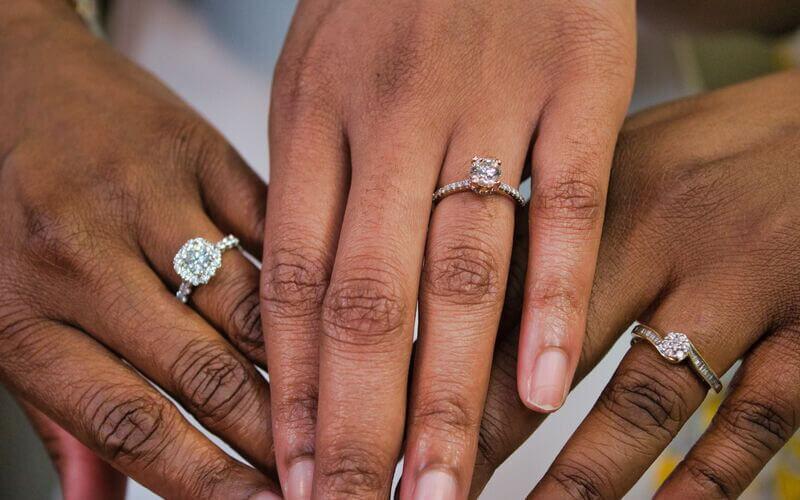
My personal preference lies with a simple, classic solitaire like the following:
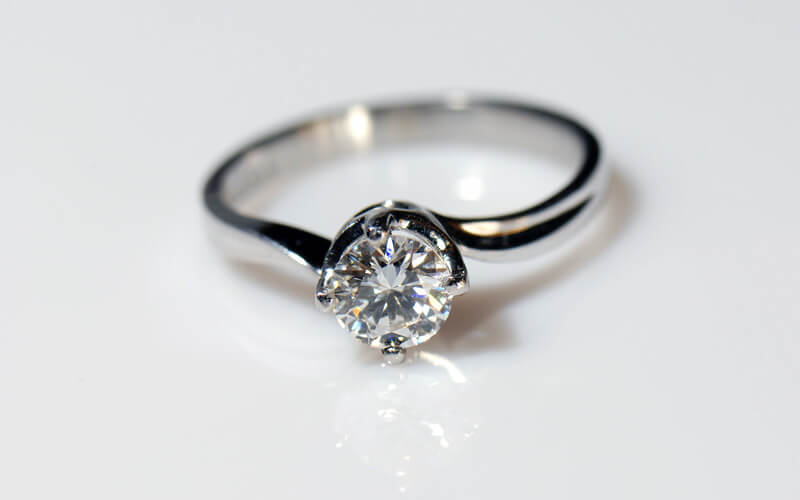
Necklaces
Necklaces and pendants are another less conventional option for memorial diamonds, although they are still relatively popular.
What sets them apart from other options is that they allow the diamond and what it represents to stay close to your heart on a day to day basis, literally.

I would note here that if you prefer a necklace just because it’s a way to keep your loved one close, you may wish to consider if you even need a diamond.
Theoretically, you could just buy a pendant into which you can place your loved one’s ashes and bypass buying a diamond altogether. There are some sellers on Amazon that sell this type of jewelry.
Naturally, this could save you a lot of money, although I understand why some people would consider it “less special”. In any case, it’s something to be aware of.
Alternative Options
There are other types of cremation jewelry, like bracelets, earrings, cufflinks, and three-stone pendants you could consider as well – but I typically advise against these.
For most people, unless you’re going with a family package, you don’t want multiple diamonds – you want one diamond. And necklaces and rings are the best way to present single diamonds.
Picking a Shape
The next step when looking for the cremation diamond you want is to choose the shape (not to be confused with cut).
Ultimately, this comes down to personal preference, and not all diamond shapes will be compatible with all settings.
Most cremation diamond companies offer round, princess, cushion, radiant, asscher, marquise, emerald, oval, pear, and marquise options. You can see how they look in the image below:

I personally prefer round-shaped diamonds.
They are the most popular and classic shape, best suited for rings. They are easier to cut than most options, making them a relatively safe choice.
The 4 C’s: Cut, Carat, Color, and Clarity
The 4 C’s of diamonds are the four quality characteristics used to grade diamonds established by the non-profit Gemological Institute of America many decades ago. They are cut, carat, color, and clarity.
If you go to a jeweler and buy a mined diamond, you can view a certificate that shows how the diamond you’re looking at has been graded. This would contribute towards the price.
The problem with cremation diamonds is that they aren’t graded until after they’ve been grown – and after you’ve paid.
This means you won’t get to decide on the grading information you ultimately receive. You can certainly influence it, but some things will be out of your hands.
This also means it’s super important to choose a company that consistently deals with the 4C’s.
Color
Color is the first of the 4 C’s to consider.
Generally, cremation diamonds that are not artificially colored will be blue, colorless, or slightly yellow. This differs from mined diamonds, where colorless is seen as the most desirable option.
Most memorial diamonds that are not artificially colored typically have a blue tint. This is due to the varying levels of boron in the deceased’s cremated remains. It means the exact shade of blue you get will be entirely unique.
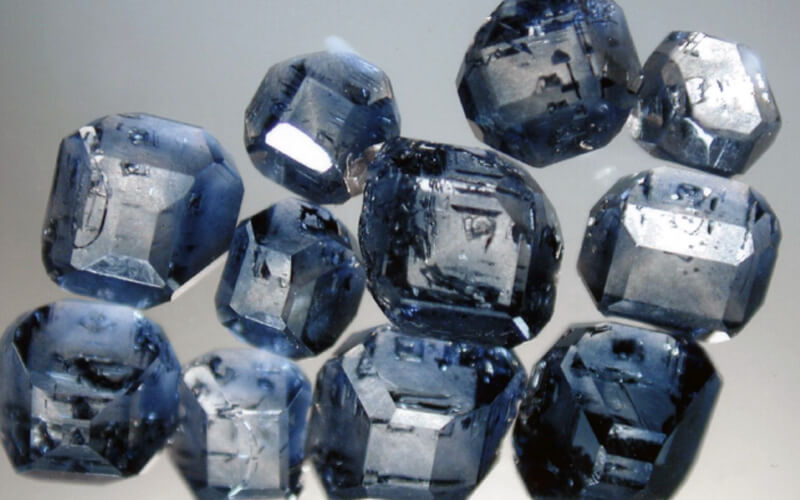
With some cremation diamond companies, the diamond may come out ever so slightly yellow. This is a result of nitrogen in the deceased’s remains.
If you don’t want to gamble on a “natural” color, companies like Eterneva offer fancy coloring treatments. This is how colors such as red, pink, blue, or purple can be added to the diamond.
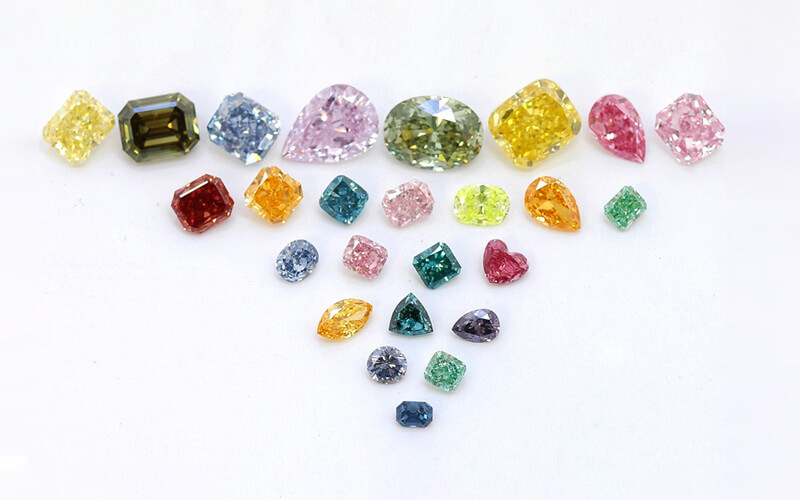
Cut
The cut of a diamond is another important factor to consider. When a diamond is first grown, it comes out as what is known as a rough diamond, yet to be shiny and in the shape you would hope for.
The “cut” refers to the ultimate symmetry and polish of the diamond you receive. It affects the diamond’s sparkle, glisten, brilliance and fire.
This is entirely determined by the person in charge of cutting your diamond, which is why choosing a reputable company with a good track record is important.
You can jump to our recommendations below or get in touch:
Clarity
Clarity is another one of the 4 C’s. Just like mined diamonds, cremation diamonds have flaws. The clarity of a diamond is determined by the amount of flaws or inclusions that are visible.
There are several different grades for clarity. Typically, these range from “Flawless” at the top to “I” at the bottom.

Because cremation diamonds are grown from ashes, trace elements can sometimes enter the diamond during the process of growing diamonds from ashes. This can lead to minor, unique inclusions.
Ideally, you would hope to receive a memorial diamond with at least VS1 quality, meaning “Very Slightly Included”. However, no memorial diamond company can guarantee clarity, and you shouldn’t trust a company that does.
And personally, the importance of clarity in this context matters little to me. Every “flaw” or inclusion results from something unique to the person whose cremains were used to grow the diamond. They are part of what makes it special.
Carat
Finally, the last C, carat, is how a diamond’s size is measured by weight.
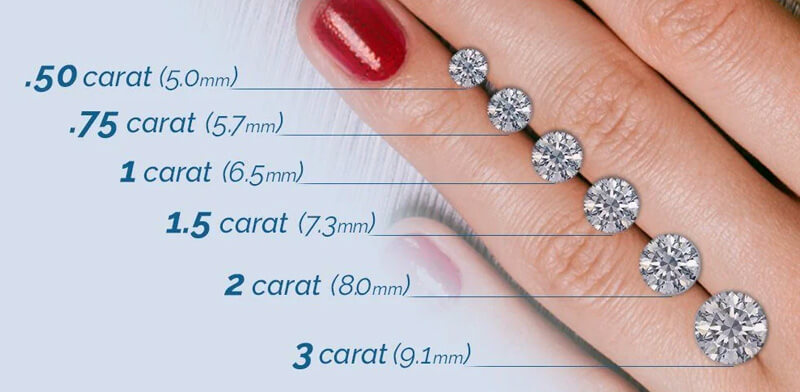
The carat of your cremation diamond does not depend on the amount of ashes you provide but on how long it remains in the HPHT machine and is allowed to grow.
This is why the carat of a diamond increases its cost – the highest expense comes from running the machine!
Because of uncertainties in the growing process, the exact carat size cannot be guaranteed. Still, a size range estimate can be provided by the company you choose.
Most providers of cremation diamonds offer sizes from around 0.25 carat up to 2 carats, but it differs by company.
Ashes to Diamonds Process: Frequently Asked Questions
What Amount of Ashes Are Needed to Create a Memorial Diamond?
The amount of ashes needed to create a cremation diamond typically ranges from 60 grams to 500 grams, depending on the process used and the company you choose. It is also possible to send hair instead if enough ashes are not available.
How Much Does a Cremation Diamond Cost?
Typically, a cremation diamond from a reputable company will cost a minimum of $3,000. However, this can go up to $20,000 for more premium options. The price will vary depending on several factors, including the carat, color, and memorial diamond company you choose.
How Much are Cremation Diamonds Worth?
Cremation diamonds are worth whatever you are willing to pay for them. Unfortunately, they hold little resale value. This is because their worth is primarily derived from their sentimental value. Jewelers and collectors are unlikely to have the same connection to your deceased loved one that you do.
How Long Does it Take to Grow a Diamond From Ashes?
Most companies take 7 to 11 months to grow a memorial diamond from human ashes, depending on the desired carat of the diamond.
You can see a timeline of our top 3 companies above.
Can I Use Ashes From My Pet?
Absolutely.
Many cremation diamond companies will grow diamonds from the ashes or hair of your pet. Like humans, most mammals contain the necessary carbon for the process.
In fact, I would not be surprised if pets such as cats and dogs make up the majority of cremation diamonds that are grown as of 2023 – it’s a very popular way to immortalize them.
Does It Matter How Old the Ashes Are?
It doesn’t matter how old the ashes are; they still contain the necessary carbon and can still be used to grow a cremation diamond. The age of the ashes does not affect the process.
Genuine Cremation Diamond Companies
| Editor’s Picks | Cremation Diamond Company | Our Rating |
|---|---|---|
| Best Cremation Diamond Company | Eterneva | 4.8/5 |
| Runner Up | Algordanza | 4.4/5 |
| Alternative Choice | LifeGem | 4.1/5 |
Other companies turning ashes into diamonds we reviewed.
Our Top Pick: Eterneva Review
Our Top Pick: Eterneva

Best Cremation Diamond Company in 2023
Our top pick for premium cremation diamonds. Amazing prices, simple process, and empathetic team.
As alluded to throughout this guide, Eterneva, based in Texas, is by far my favorite maker of cremation diamonds, offering a complete premium package at very reasonable prices. They have a 4.9 star rating on Google Reviews.
Eterneva’s process is simple, reassuring, and easy.
From the moment you arrive on their website, fill out their contact form, or give them a call, an empathetic person from their team will help you understand your options and place an order that’s right for you.
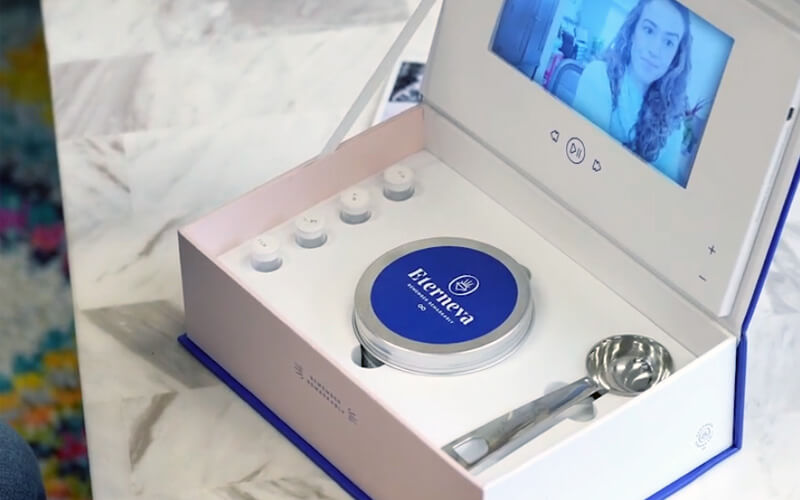
Shortly after that, you will receive their “welcome package” in the mail with their introduction video that sets out how to collect the ashes you need for your diamond and how to send them to be processed.
They keep you updated with photos and videos throughout the process and let you know exactly what is happening with your loved one’s ashes and how far along they are.
Eterneva offers diamonds of 0.2 carats up to 3 carats.
At every point during my mystery buyer interactions with Eterneva, I felt treated with respect and dignity.
They offer a wide variety of diamond shapes, colors, and custom memorial settings. If you want it, they will have it.
And the end result is something beautiful:
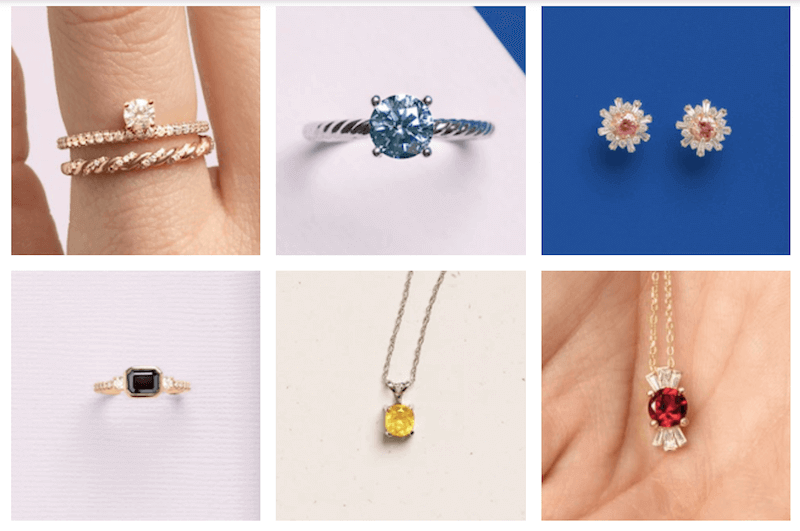
In terms of pricing, Eterneva offers options starting at $2,999. Given the quality of the service and product you receive, this is more than worth it.
Prices: $2,999 for 0.2 ct – $50,000 for 3 ct
Timeframes: ~9 months
Sizes: 0.2 – 3 carats
Ashes or Hair Required: Half a cup of hair or ashes
Certification: International Gemological Institute
Runner Up: Algordanza

Algordanza is a Switzerland-based company that creates memorial diamonds, although they have offices worldwide.
Featured in the Smithsonian, they have been in the industry since 2003. They have a team of diamond experts who provide solid customer support and guidance.
Like Eterneva, they provide various size and shape options, including emerald, radiant, brilliant, princess, asscher, and heart shapes and sizes ranging from 0.25 carat to 1 carat.
The main reason they are not our top pick is that their prices start at around $4,435. This is quite a bit pricier than Eterneva without a material difference in the quality of the diamond or service.
Furthermore, Algordanza could be more varied in the customization options they offer. For example, they only provide blue diamonds – no color options.
Also, you cannot order from Algordanza directly; you have to go through a “funeral partner”. Which adds a layer of unnecessary difficulty.
Prices: $4,435 for 0.21 ct – $22,935 for 1 ct
Timeframe: ~8 months
Sizes: 0.21 – 1 carat
Ashes or Hair Required: 500 grams of ashes or 5 grams of hair
Certification: ISO
Alternative Choice: LifeGem

LifeGem is another American company that specializes in creating real diamonds from ashes.
They were founded in 2001 and are now the longest-running company in the cremation diamond sphere.
They offer good processes and high-quality, reasonably priced diamonds, starting at around $3,000.
All the diamonds they produce are provided with a Gemological Institute of America-approved certificate of authenticity.
One thing that sets them apart from other options on our list is the fact they offer guided tours of their facilities in Chicago, for those who are interested.
The main reason they are lower on our list is mainly down to the buying experience.
Their website is outdated and hard to navigate. My experience during the mystery shopping process was not as good as with Eterneva or Algorzanda.
Prices: $2,999 for 0.1 ct – $19,999 for 0.9 ct
Timeframe: ~9 months
Sizes: 0.1 – 0.9 carat
Ashes Required: 200 grams of ashes or a lock of hair
Certification: Gemological Institute of America
Other Memorial Diamond Companies You Should Be Aware Of
As part of our review process into memorial diamond companies, we also looked into a number of other options that we could not include in the section above.
Effectively, what we believe we have uncovered is a group of “cremation diamond” sellers acting as “dropshippers” at best.
We could not verify the integrity of the claims they make on their websites or in their marketing. We cannot verify that they are selling the services they claim to. In some cases I am concerned they might not be turning ashes into diamonds at all.
These are all companies we recommend avoiding.
Lonité

Lonité is another Swiss company with a fancy website, reasonable pricing, and good information on how they create their diamonds and the costs and timeframes likely to be involved.
Unfortunately, we cannot recommend them.
During our research, we found many very negative reviews from dissatisfied customers. Specific complaints included:
- Failure to respond to communication/updating on the process,
- Losing(!) their loved one’s diamonds,
- Taking their money (and ashes) and disappearing.
Their lack of support at times was so bad that many customers out there have lost faith that they even received the right diamond.
While I have seen no evidence to doubt Lonité’s marketing and claims, I would steer clear until they are in better standing with their customer base.
EverDear

EverDear, based in Los Angeles, might be worth checking out if you’re on a budget. They claim to offer cremation diamonds starting at as low as $1,400 for a 0.1-carat blue diamond – although this doesn’t include the jewelry setting.
However, while EverDear diamonds are Gemological Institute of America certified, we have read many customer reviews of this company that were less than flattering.
Furthermore, given the very low prices compared to other brands, we are somewhat skeptical about the amount of ashes (if any?) used to grow EverDear diamonds.
We cannot find much information about this company online. They don’t offer tours. Their lab address is a secret. I would personally avoid t
Heart-in-Diamond
Supposedly founded in the UK, Heart-in-Diamond suffers from similar issues to Lonité and Everdear: Fundamentally, I cannot confirm their legitimacy.
Heart-in-Diamond claims they can make cremation diamonds in as little as 70 days. That’s just over two months. This seems odd compared to the 7+ month timeframes offered by other cremation diamond companies.
That, coupled with quite impressive prices, makes me very skeptical of the exact service that Heart-in-Diamond is offering.
Saint Diamonds
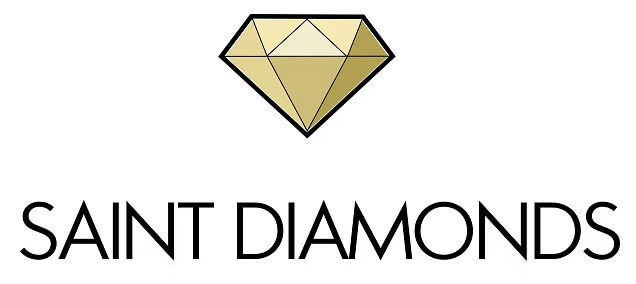
The final cremation diamond brand we reviewed is Saint Diamonds, purportedly founded in 2013 by Bernard Orlo.
They do, at a minimum, appear to sell genuine diamonds that come with the necessary certifications.
The only problem is, as far as we can gather from Googling, Bernard Orlo does not exist. This is a red flag to me.
The Bottom Line
It’s no surprise that I love the idea of cremation diamonds. If I didn’t, I wouldn’t have spent the past week putting together what I consider to be the most comprehensive resource on the internet about them.
They are truly special keepsakes. A way to keep your lost loved one close to you forever.
Avoid the dodgy companies, go with someone reputable, and I am sure you will find something beautiful.
If you have an experience with a cremation diamond company, please leave us a comment below.
And if you’re looking to buy a cremation diamond, feel free to reach out to us today.



